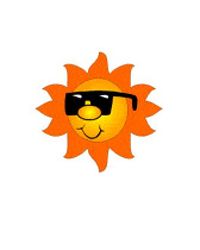UnNews:Sun serenades solar system
22 April 2007
LIVERPOOL, ENGLAND - Astronomers at Liverpool University have confirmed that, as the ancients believed, there really is a sort of celestial music, or “music of the spheres,” as it was known to Pythagoras and his ilk. Sometimes known as musica universalis, or universal music, the music of the spheres was more mathematical than audible, as far as the ancients were concerned, but that seems to have been the case only because they were unable to hear the music.
At one-thousandth of a hertz, it is below the hearing threshold of human beings. However, scientists have recorded the faint melodies, making them available on CD’s distributed by Here Comes the Sun Recordings, LTD. Thus, the same city that gave the world the Beatles has now given them the sun. The moon and the stars may not be far behind.
The recordings were played at the Royal Astronomical Society’s National Astronomy Meeting in Liverpool this week, after a long-winded explanation by Dr. Albert Hall as to how the sun manages to sing. “Looping magnetic fields along the sun’s outer regions, known as the corona, carry magnetic sound waves in a similar manner to such musical instruments as guitars or pipe organs. Normally, these sounds are too faint at one-thousandth of a hertz, to be heard by the human ear, which is capable of discerning sounds only within a range of 20 to 20,000 hertz. However, after recording these songs by satellite, we have boosted their volume.”
“The loops reach heights of 10 miles and travel at speeds of 90,000 miles per hour, releasing the equivalent of millions of hydrogen bombs,” Dr. Hall told spellbound listeners. “They also make some pretty damn fine music.”
“In effect,” Dr. Ringo Sushi told Unnews’ reporter, Lotta Lies, “the sun is serenading the solar system, and, let me tell you, the sun is one hell of a talented singer. The world hasn’t seen--or heard, I should say--the likes of him since Elvis or the Beatles.”
According to Simon Cowell, Paula Abdul, and Randy Jackson, the panel of judges on the television show American Idol, the sun is a better performer than Sanjaya the Victorious, a character in the Hindu musical epic Mahabharata and a recent contestant on their show.
“The sun's range is incredible,” Abdul says.
Jackson agrees: “The sun can sing anything from blues to rock and roll. He’s equally good whether it’s country and western or gospel.”
Cowell was less enthusiastic, or, as he put it, “more tempered,” in his appraisal of the sun’s talent, but he did say that “the sun is better than Sanjaya.”
“The way the sun sings ‘Here Comes the Sun’ is breathtaking,” Abdul declared.
Jackson agrees that the sun is a brilliant performer: “The sun has an amazing range and is able to sing the Doors’ ‘Waiting for the Sun’ or the Beatles’ ‘Sun King’ equally well.”
For his part, Cowell prefers the sun’s versions of older melodies, such as W. R. Williams’ “Ev’rybody’s Happy When the Sun Shines,“ Irving Berlin’s “Some Sunny Day,” Chris Smith’s “Sunlight on the Waterfall,” and James Kendis and James Brockman’s “All I Have Are Sunny Weather Friends.” Like Abdul and Jackson, the curmudgeonly Cowell agrees, “The sun is a real star.”
Reportedly, astronomers are recording the voices of the moon and other stars as they sing a cappella. “If they’re anywhere nearly as good as the sun, we’ll release their songs, too,” Dr. Hall predicted, “possibly changing our label from Here Comes the Sun Recordings, Ltd. to Here Comes the Sun, the Moon, and the Stars, Ltd. or, possibly, The Music of the Spheres, Ltd.”
Expect CD's to be available in stores worldwide by June 2007.
Source[edit | edit source]
- Lotta Lies "Sunny days are here again: sun songs to brighten your day" Instant News, 55 seconds ago
